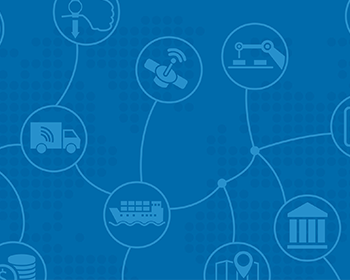Keyword search
By Lena Chaponniere, 3GPP Working Group CT1 Vice-Chair. Highlights Issue 4, May 2022.
One of the defining drivers of 5G is the expansion beyond traditional mobile broadband to provide solutions meeting the needs of vertical industries. A very good example of 3GPP rising up to this challenge is the work done in Release 17 to use cellular connectivity to support Uncrewed Aerial Systems (UAS), thereby enabling this vertical to benefit from the ubiquitous coverage, high reliability, QoS, robust security, and seamless mobility provided by the 3GPP system.
Carrier aggregation, where a terminal receives or transmits on multiple component carriers (frequency blocks assigned to the same user), is a key technique introduced as part of LTE Advanced from release 10 onwards. The main advantages are:
- Improve the data rate per user (higher peak user throughput)
- Mitigate inter-cell interference (efficient use of spectrum)
- Enhance the network deployment (intra-band contiguous, intra-band non contiguous, inter-band non contiguous)
Carrier aggregation is a long successful story of both LTE/NR enhancement with new combinations of frequency band added in every release.
The following provides an overview of the CA technique evolution through the different 3GPP releases since its introduction.
The Multi-(U)SIM work item specifies solutions to address the paging occasion collision issue for single-Rx/single-Tx Multi-USIM (MUSIM) User Equipment (UE), and to notify network A of its switch from network A for MUSIM purpose, and to support indicating to the MUSIM UE whether an incoming paging is for voice service.
The adding channel bandwidth support to existing NR bands work item specifies additional channel bandwidth – sub-carrier spacing combinations for each considered band for BS/UEs supporting the wider NR channel bandwidth for a more efficient use of operator’s available spectrum. The band should be a specified NR band, including SUL and SDL bands.
|
880092 |
Adding channel bandwidth support to existing NR bands |
NR_bands_R17_BWs |
|
The following requirements were introduced as part of the Work Item:
-
Channel bandwidth objectives: Many of the E-UTRA bands that were re-farmed specified E-UTRA channel bandwidth (5, 10, 15 and 20 MHz) To define additional channel bandwdiths for each considered FR1 and FR2 bands. The FR1 channel bandwidths consist of: {5 MHz, 10 MHz, 15 MHz, 20 MHz, 25 MHz, 30 MHz, 35 MHz, 40 MHz, 45 MHz, 50 MHz, 60 MHz, 70 MHz, 80 MHz, 90 MHz, 100 MHz} and the FR2 channel bandwidth consist of: {50 MHz, 100 MHz, 200 MHz, 400 MHz}.
-
NR band objectives: Channel bandwidth in existing NR band. The band should be a specified NR band, including SUL and SDL bands.
The latest Status report for the Work Item (RP-221213) reported on agreements approved at 3GPP TSG RAN meeting #96 (June 06-09, 2022), on detailed work from RAN4 Working Group.
-
See a list of related CRs: select "TSG Status = Approved" in: https://portal.3gpp.org/ChangeRequests.aspx?q=1&workitem=880092,880192
Acronyms:
BW Bandwidth
BWP Bandwidth Part
BWChannel Channel bandwidth
BWChannel_CA Aggregated channel bandwidth, expressed in MHz
BWChannel,max Maximum channel bandwidth supported among all bands in a release
BWDL Channel bandwidth for DL
BWUL Channel bandwidth for UL
CA Carrier Aggregation
CC Component Carriers
FR Frequency Range
RF Radio Frequency
SCS Subcarrier spacing
SDL Supplementary Downlink
SUL Supplementary uplink
3GPP Work Plan:
See a listing of all work & study items here: https://www.3gpp.org/ftp/Information/WORK_PLAN/ and search for ‘NR_bands_R17_BWs’ in the acronym field of the Excel sheet there.
The text above is largely taken from the Release 17 description document TR21.917 (clause 16), which is a summary based on RP-221054 (NR_bands_R17_BWs).
Working Groups:
RAN4, RAN1
3GPP Release:
Rel-19
Rel-18
Rel-17
When Network Slices allocated to third party providers are deployed by Mobile Network Operators, the means by which providers can be charged for usage of assigned Network Slice(s) is not yet described.
The objective of this work item is to provide the functional description of network slice charging based on 5G data connectivity charging performed between the Session Management Function (SMF) and Charging Function (CHF) in the 5GS, as an informative Annex in TS 32.255: ‘Telecommunication management; Charging management; 5G data connectivity domain charging; Stage 2 Details of 5G Data Connectivity charging information for Networks Slice’.




